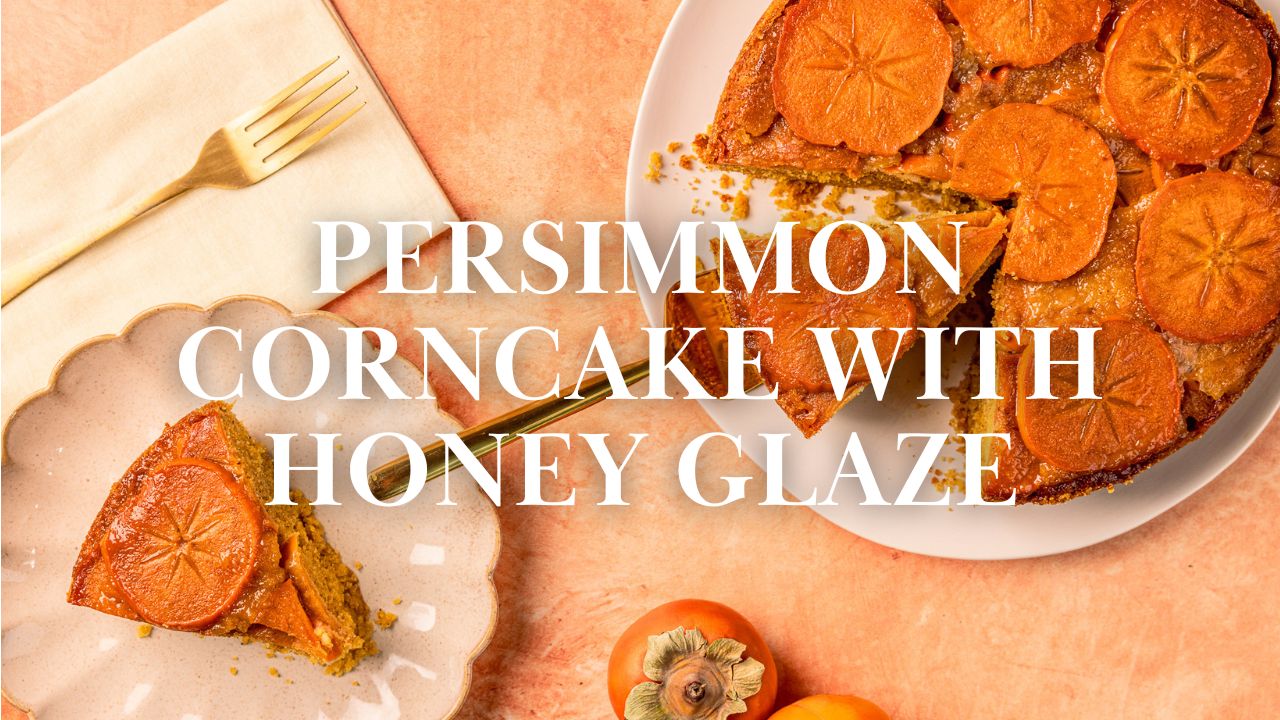
Beyond taste, the popularity of this dessert can be attributed to the elegant display of fruit – and pineapples were a very smart choice in early renditions. As a symbol of wealth and royalty, pineapples were once coveted in Europe and still adorn wealthy estates and classic architecture, like Saint Paul’s Cathedral in London. By the late 1800s pineapples gained more mainstream popularity as the fruit was more accessible to the masses. At the time of the recipe's origins, the pineapple was as trendy of an ingredient as avocados.
Pineapples or not, the upside-down cake remains a simple dessert to display unique seasonal fruit. It has a dense crumb wrapped in a moist and perfectly gooey exterior held together with softly cooked fruit. It’s comfort in a pan and remarkably easy to make.
Why Make an Upside-Down Cake
Upside-down cakes are one of our favorite ways to highlight seasonal fruit. These cakes are less tedious than pie dough and require no icing or decorating. The fruit is the headliner, arranged simply on the bottom of your pan for a perfect presentation at the center of the table.
The ease of making this showstopping dessert played a big part in its meteoric rise to fame in kitchens across the country. Whether you are a novice or a seasoned baker, making an upside-down cake is an easy task. With a few simple preparations at the start, you can master this dessert quickly!
And, you don’t have to limit yourself to desserts. The dense crumb of the cake lends itself well to more savory versions – like a corn cake – for ripe summer tomatoes and more.
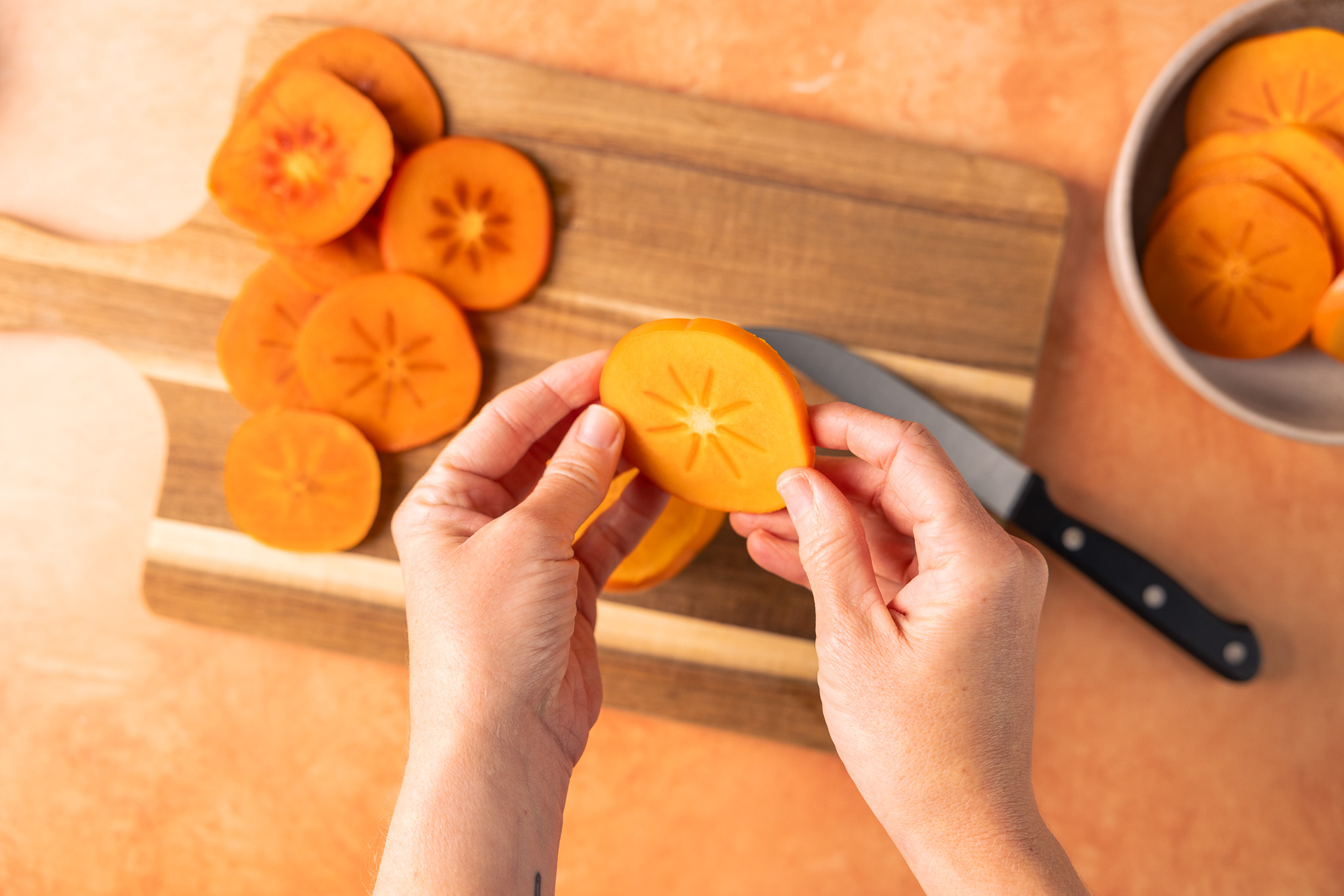
Best Fruit to Use
A variety of fruits can be used in an upside-down cake, but hearty fruits (i.e. not berries) work best. Because the cake bakes inverted, the fruit you choose needs to withstand the weight of the cake and hold its shape – both through the bake and once flipped for your final presentation.
The classic upside-down cake pairs pineapple slices with maraschino cherries. It’s very simple to arrange in a pan, with a pineapple flavor that permeates each moist little crumb. Many recipes call for canned pineapple rings, but we prefer fresh pineapple for its flavor and structure.
There are countless upside-down cake recipes that explore modern variations of an upside-down cake, pairing seasonal or exotic fruits with spices and more. Some of our favorite pineapple alternatives include apricots, apples, pears, peaches, plums, or any stone fruit. For a truly seasonal version of the upside-down cake, try this Honey-Glazed Persimmon Corncake.
No matter what fruit you choose, always opt for clean slices. Chopped fruit or fruit chunks won’t hold up to the pressure of the cake, resulting in a messy exterior that won’t look as good as it tastes.

Best Cake to Use
While upside-down cakes are known for a moist crumb, the cake tends to be denser than a standard cake. Paired with the fruit, this texture increases the flavor profile and melts in the mouth alongside the gooey topping.
Choose a heartier batter when making an upside-down cake. You can also play around with your flour ratio, replacing some flour with cornmeal or ground nuts. Fruit juice and zest will add flavor and moisture to complement the fruit. Or, you can try adding additional moisture with a light dairy, like sour cream, yogurt, ricotta cheese, or cottage cheese.
What You Will Need
Even the most sophisticated upside-down cake only requires the most basic kitchen tools. You can use a standard cake pan or pie plate – and even a large (oven-proof) bowl or sheet pan will do in a pinch. If available, we like to use a springform pan as it provides an easy release once the cake is cooled.
Gathering your ingredients, including all-purpose flour, dry ingredients, eggs, and unsalted butter, ahead of time will make the task simple as you begin. You will start with the topping before moving on to the batter. Most recipes use melted butter and brown sugar for the topping. But, we like to mix it up occasionally with honey instead. Either is rich and delicious with the tartness of the fruit.
Tips for Success
Upside-down cakes are very simple to make – almost too simple. The trick is in the details during preparation. Here are a few hints to help master on your first try:
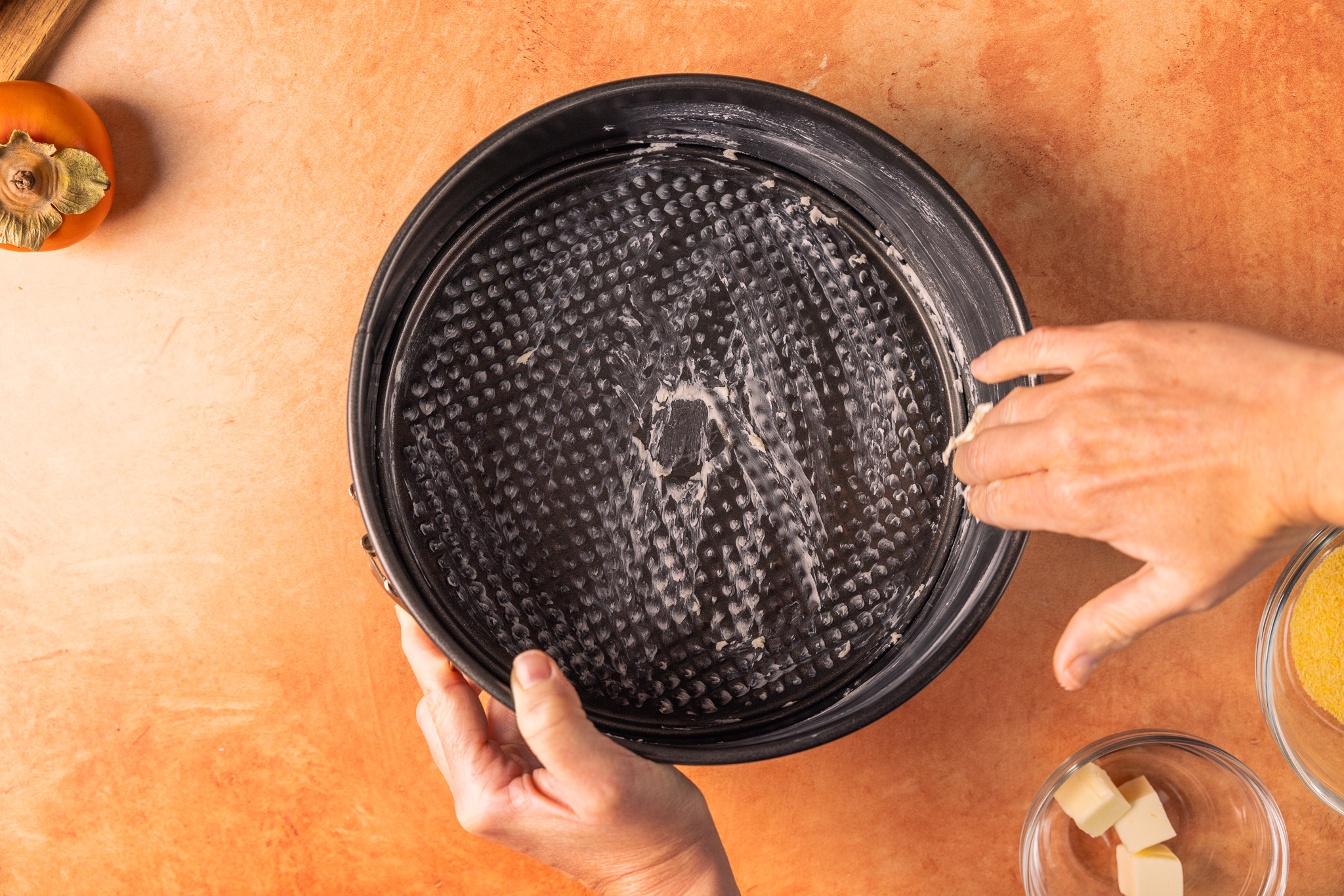

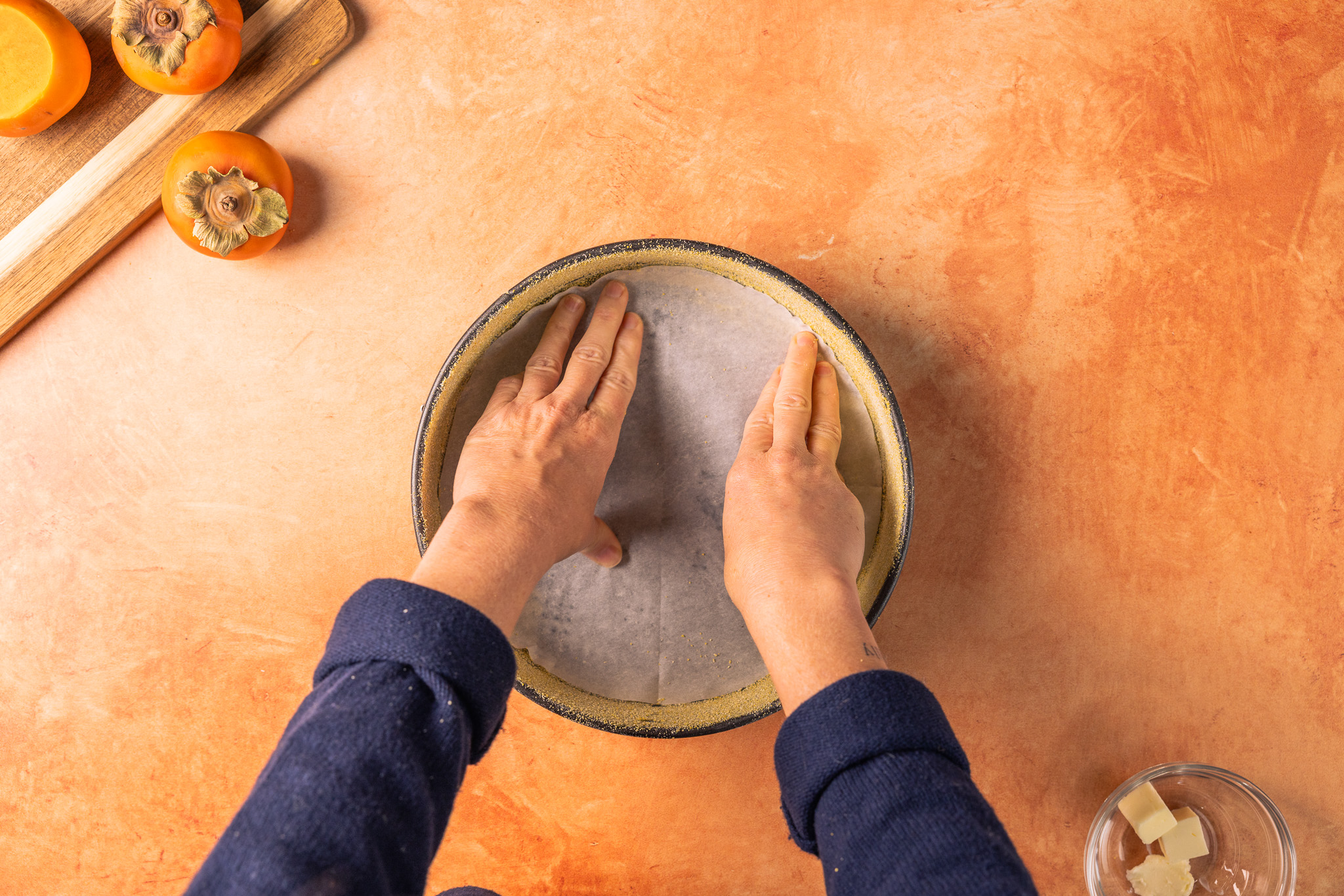
Thoroughly line the pan. The crust of your cake is the star. So, spend extra time lining your pan. Parchment paper is essential at the bottom to protect the fruit. We also like to grease the sides of the pan and coat with breadcrumbs or cornmeal to easily release the cake once cooled.
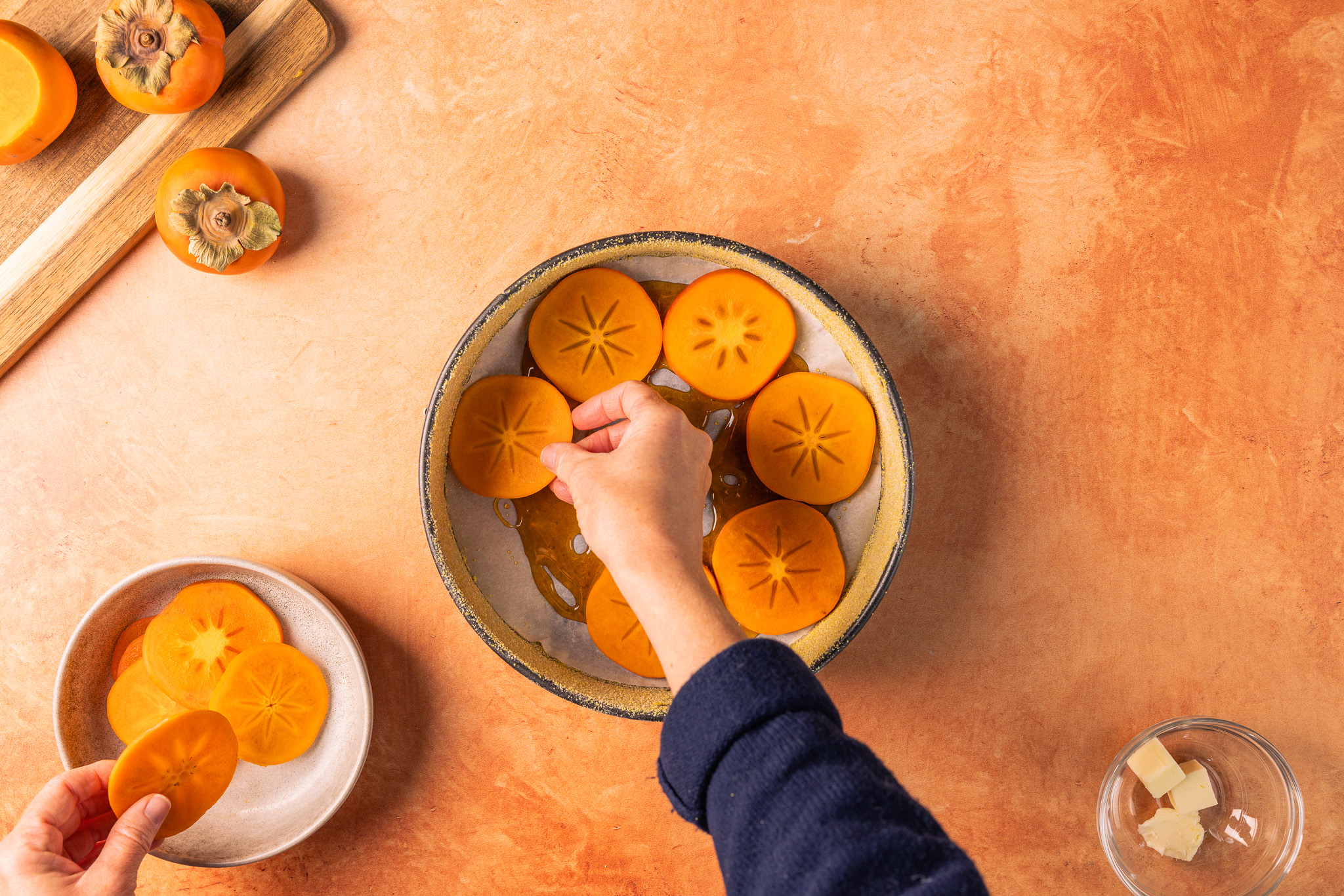
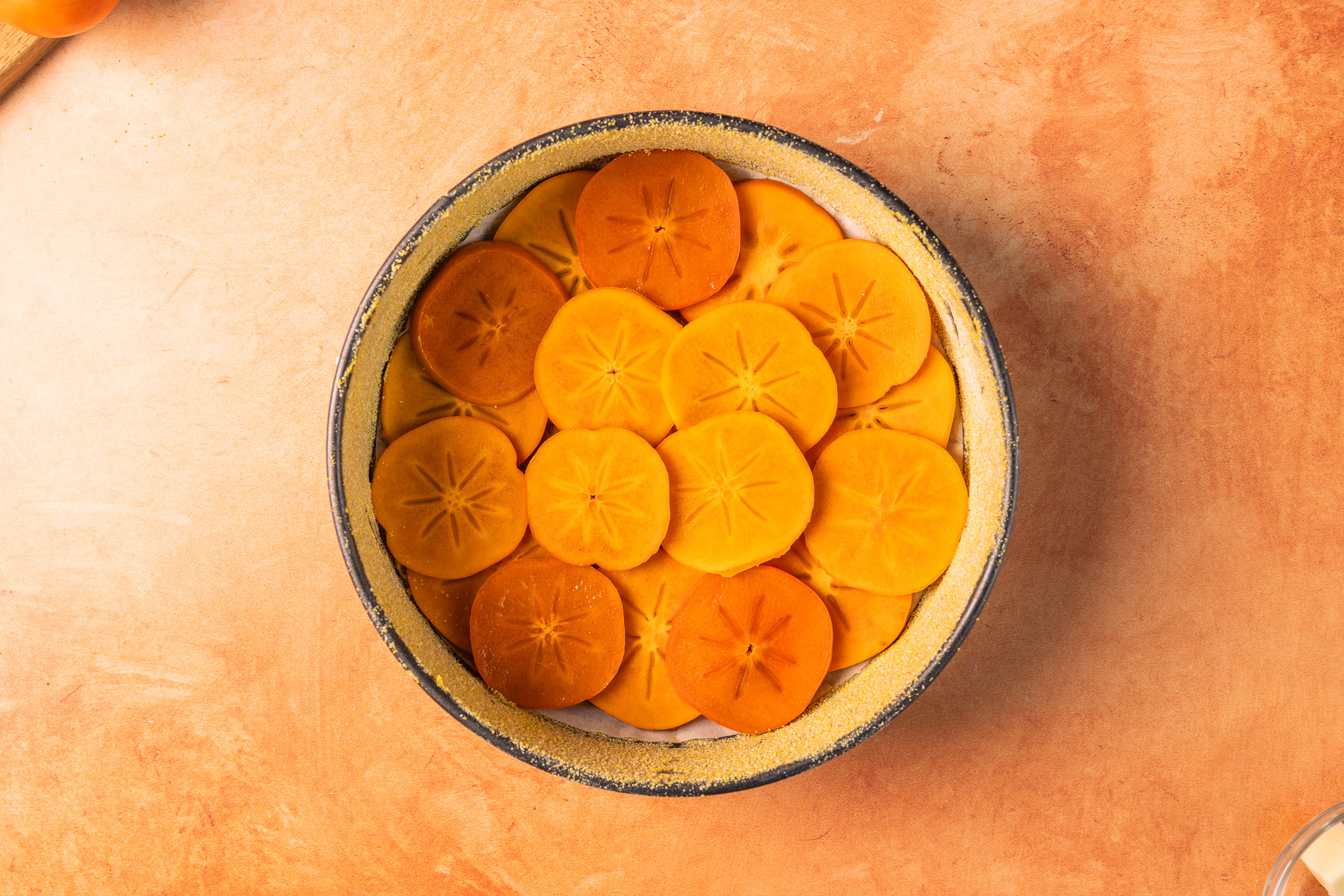
Take your time with the fruit. Neat, clean slices will help your final presentation and make for a smooth exterior of your cake.

Carefully add the batter. Pouring the cake batter into the pan too quickly can disturb the fruit on the bottom. We like to add the batter in dollops with a large spoon rather than pour for more control.
Test before removing from the oven. Underbaking will cause your cake to collapse once inverted. Test with a toothpick before removing it from the oven and rotate your cake halfway through to ensure an even bake.
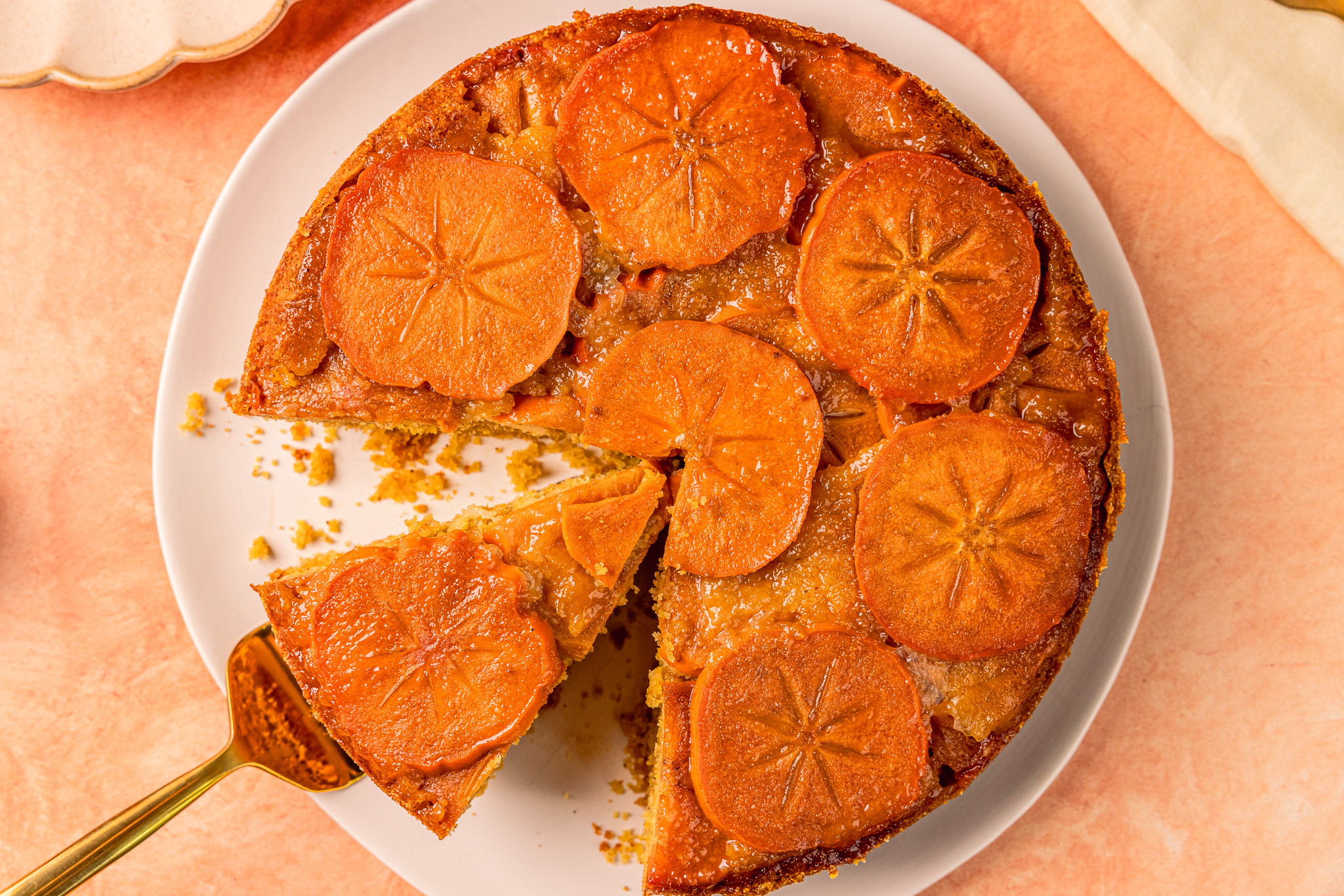
Cool completely. Inverting your cake too quickly can be a disaster. The top and sides will be tricky to release, and a hot or warm cake can easily collapse when you invert the cake. So be patient and let it cool down!
Ready to put those new skills to use? Try out our Persimmon Corncake with Honey Glaze!
